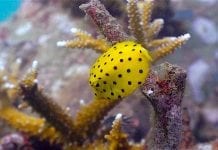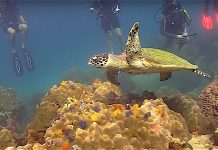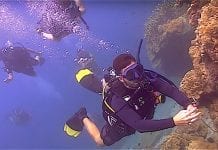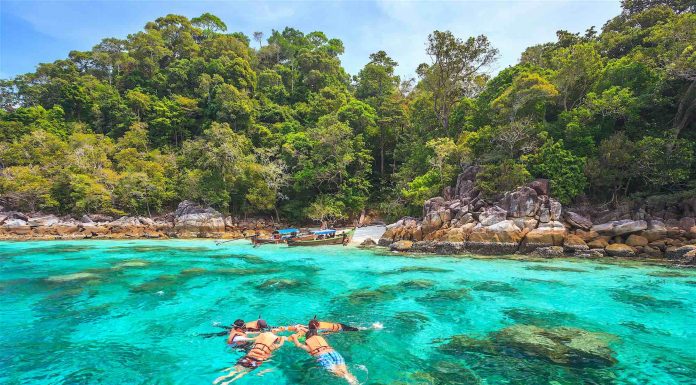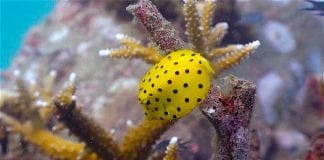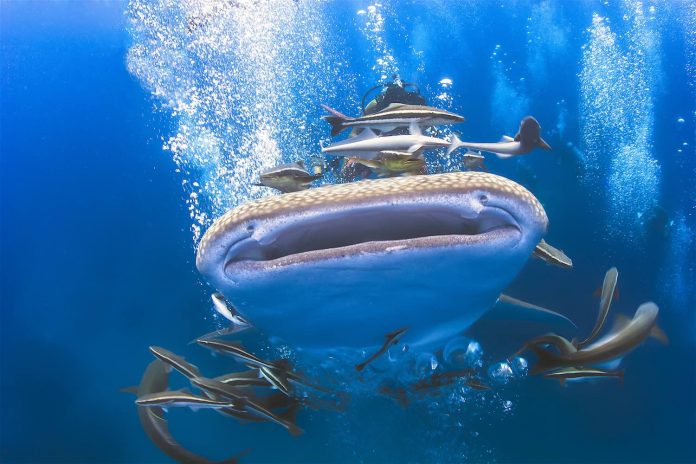
Koh Tao is a Popular Place to see a Whaleshark
Tiny tropical Koh Tao packs a punch when it comes to scuba diver training and is commonly accepted to be the world’s number one destination to gain a diving certification.
There are many reasons why, not least because the training standards for divers are so high and also the low cost of obtaining a qualification.
Additionally, there are 30 easily accessible dive sites to choose from, a laid-back island lifestyle, diving all year round and the amazing underwater diversity.
With vibrant coral reefs and encrusted pinnacles, the waters around Koh Tao are home to a huge variety of colorful marine life, from small reef fish to larger pelagics and sea turtles.
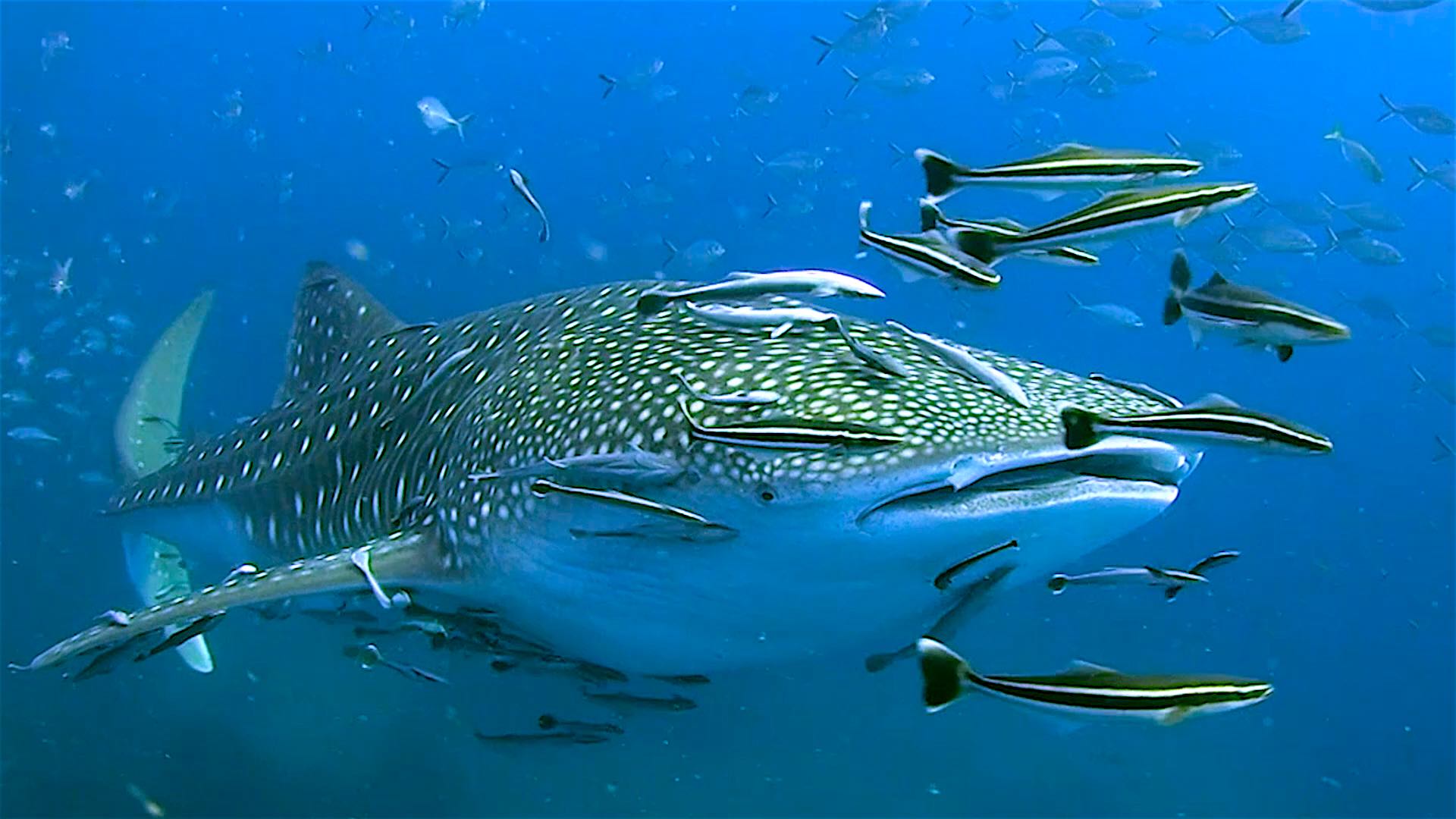
The Most Spectacular Fish with regular sightings on Koh Tao is the Whaleshark.
Many of the visitors to Koh Tao who arrive to learn scuba diving or enjoy a snorkel trip, get excited about the possibility of a Whaleshark sighting whilst they are in the water.
Before we let you into the secret of the best time to see a Whaleshark, lets understand a little more about this amazing fish.
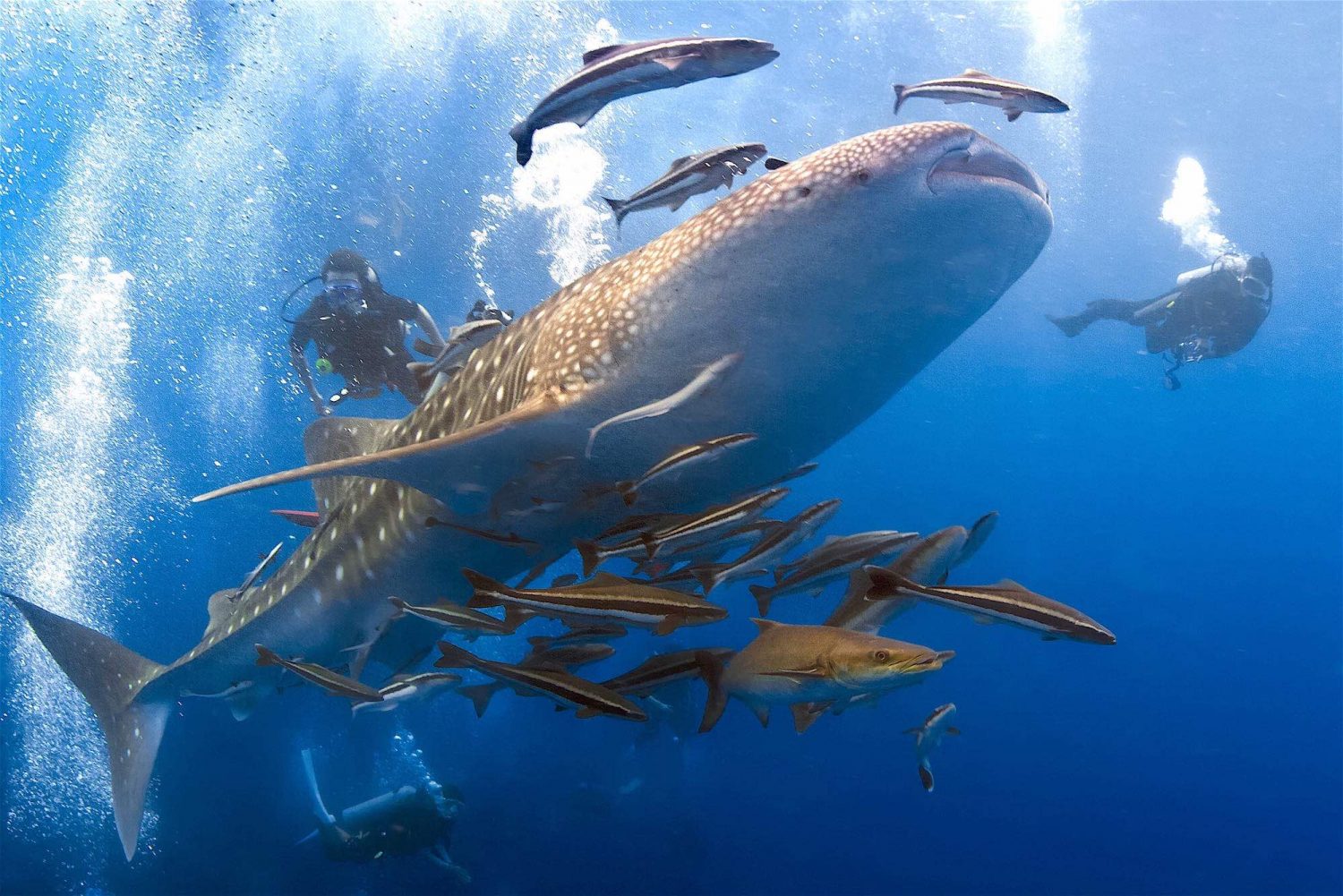
13 Important Facts about Whalesharks
- The Whaleshark (Rhincodon Typus) is the largest fish and the largest non-mammalian vertebrate in the world.
- Known to grow up to 12 metres in length, the average Whaleshark can weigh over 20 tons and lives for 70-100 years.
- Young Whalesharks have a fast growth rate and it takes up to 30 years for them to reach maturity.
- Not part of the whale family, a Whaleshark earns the name due to its size and the fact it feeds in the same way as a blue whale.
- Surviving on a diet of plankton, small fish filtered from the water and clouds of eggs produced during the mass spawning of fish and coral, the Whaleshark is a filter feeder.
- Whalesharks use sensory cells in nasal grooves above their mouth to detect the presence of food in the water, Whalesharks can feed by ram filtration.
- Whalesharks swim forward with their mouth open forcing the water in and over their gills, or by active suction feeding in which they suck in water by opening and closing their mouth.
- The mouth of a Whaleshark can be up to 1.5 metres wide, allowing lots of water to flow in and is located on the front of the head rather than the underside.
- A Whalesharks mouth contains 3,000 tiny teeth, although they have no function in feeding. They have a number of filter pads that are used to separate food from the water.
- Whalesharks have five pairs of gills.
- The outer skin of the Whaleshark, which is hard and rough to touch, can be up to 14cm thick.
- A Whaleshark’s underbelly is white, whilst the remainder of the skin is dark grey with white spots.
- Each individual Whaleshark has a unique pattern of spots, which makes it possible for marine biologists to track them and understand their habits better.
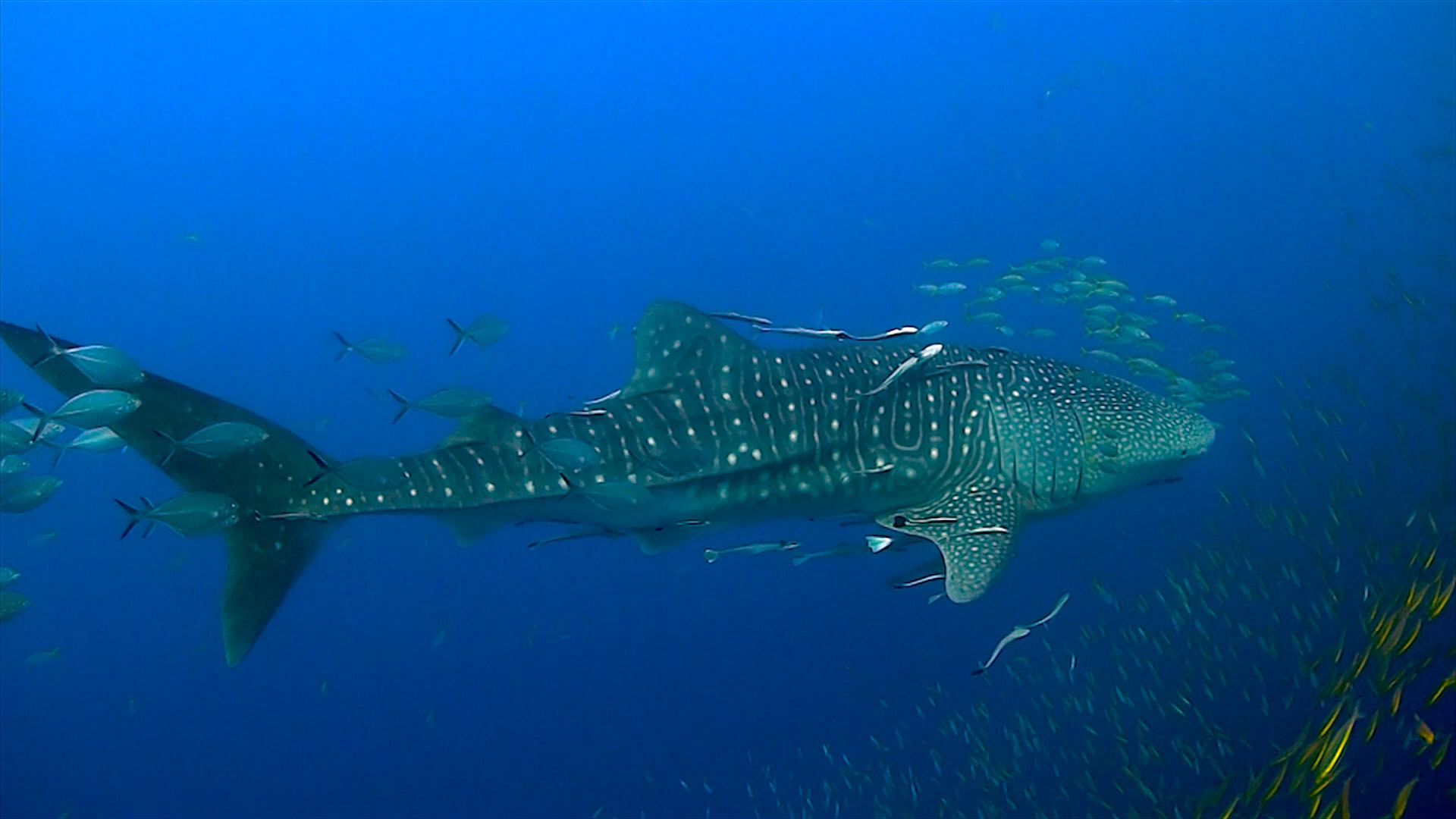
Underwater Habits of a Whaleshark
Whalesharks are primarily pelagic, but do not like to stay in deeper waters. They are capable of reaching depths of 1800m, then return to the surface to warm up and are rarely found in water below 21C.
A Whaleshark has very few known predators, but their choice to stay close to the surface leaves them vulnerable to a species that poses their biggest threat: humans.
Their large size and slow speed make them easy to hunt and despite being listed as an endangered species by the International Union for Conservation of Nature, there are areas where unregulated hunting occurs.
In addition to the threat from hunting, boats pose a significant risk. Whalesharks may have a thick skin, but a collision with a boat or accidental capture in fishing nets can cause serious injury.
As if humans didn’t already pose enough of a threat, the volume of plastic that has found its way into the oceans creates an additional hazard.
As Whalesharks are filter-feeders, it is very easy for the water that passes into their mouths to contain plastic.
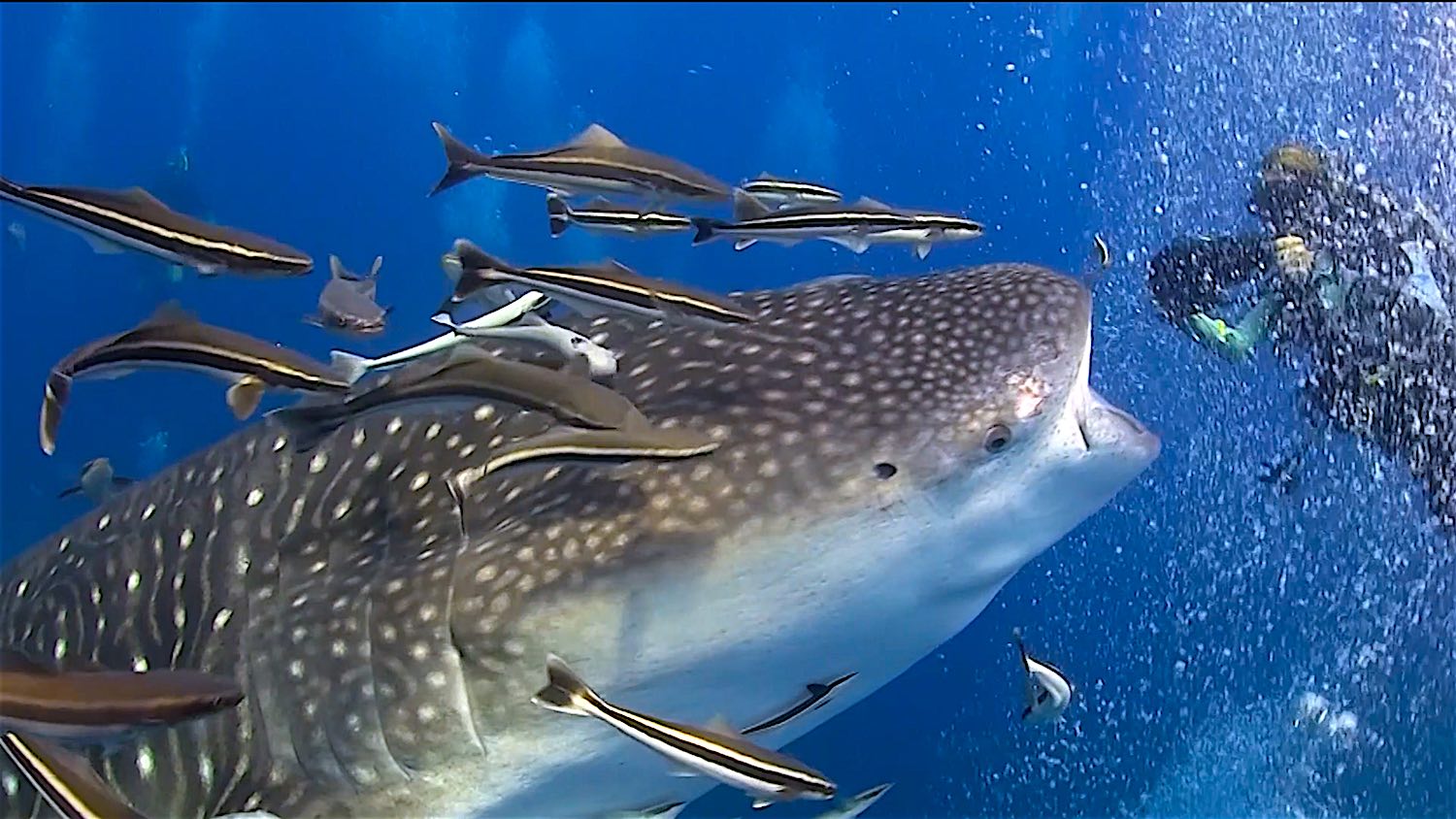
Say No to Plastic
This plastic would be unlikely to pass out through their gills, and so would move into their digestive system, causing obstructions which lead to starvation.
The threat from humans is largely responsible for Whaleshark numbers falling by more than half in the last 75 years alone.
Despite the threat that humans pose to Whalesharks, they pose no threat to us and are known to be gentle, curious and even playful.
Their slow speed means they are accustomed to swimming alongside humans and younger Whalesharks have been known to play with the bubbles created when we scuba dive.
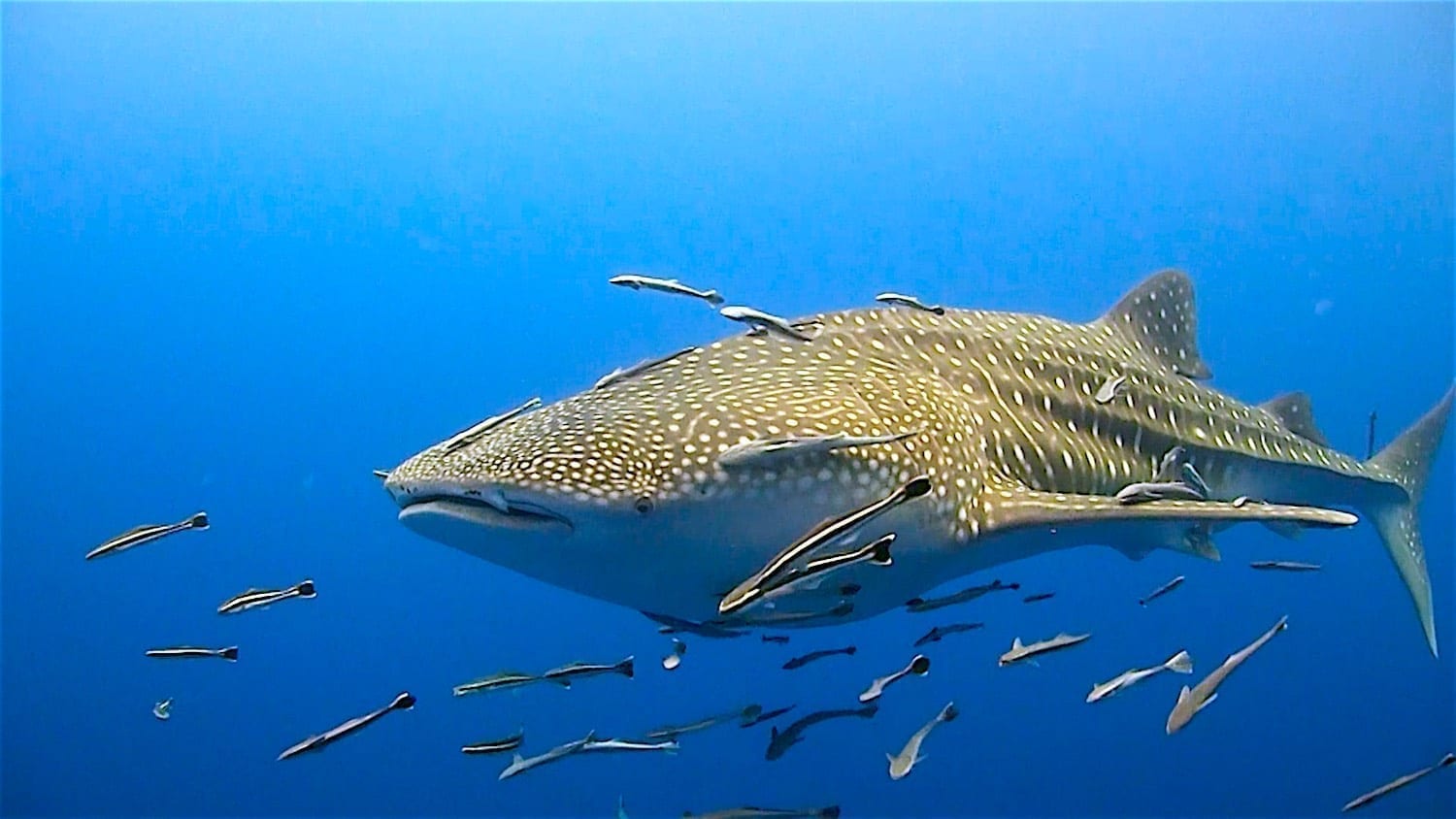
The Best Chance to see a Whaleshark around Koh Tao
It is possible for Whalesharks to be seen around Koh Tao at any time of year, but if you want to increase the likelihood of seeing one, you should visit Koh Tao between March and June or October and December.
The biggest chance of seeing a Whaleshark around Koh Tao falls between March and June, a time the local diving industry refers to as “Whaleshark season”.
Hot & Dry Season
The weather during these months is generally hot and dry, with little or no wind, creating optimum conditions for diving and great visibility.
If you aren’t a great fan of the hot weather, you will also have an increased chance of seeing them between October and December, when it will be cooler.
This does coincide with Koh Tao’s monsoon season and may be the reason for the increased sightings as the higher rainfall leads to more nutrients washing into the water.
The extra nutrients in the water creates lots of micro-algae, which attracts the Whalesharks.
The best locations to find Whalesharks are the areas where they gather to feed on fresh plankton that has been delivered by the underwater currents.
The best locations on Koh Tao to see a Whaleshark are Chumphon Pinnacle, Sail Rock and South West Pinnacle.
These dive sites are also hugely popular due to the variety of marine life that they are home to.
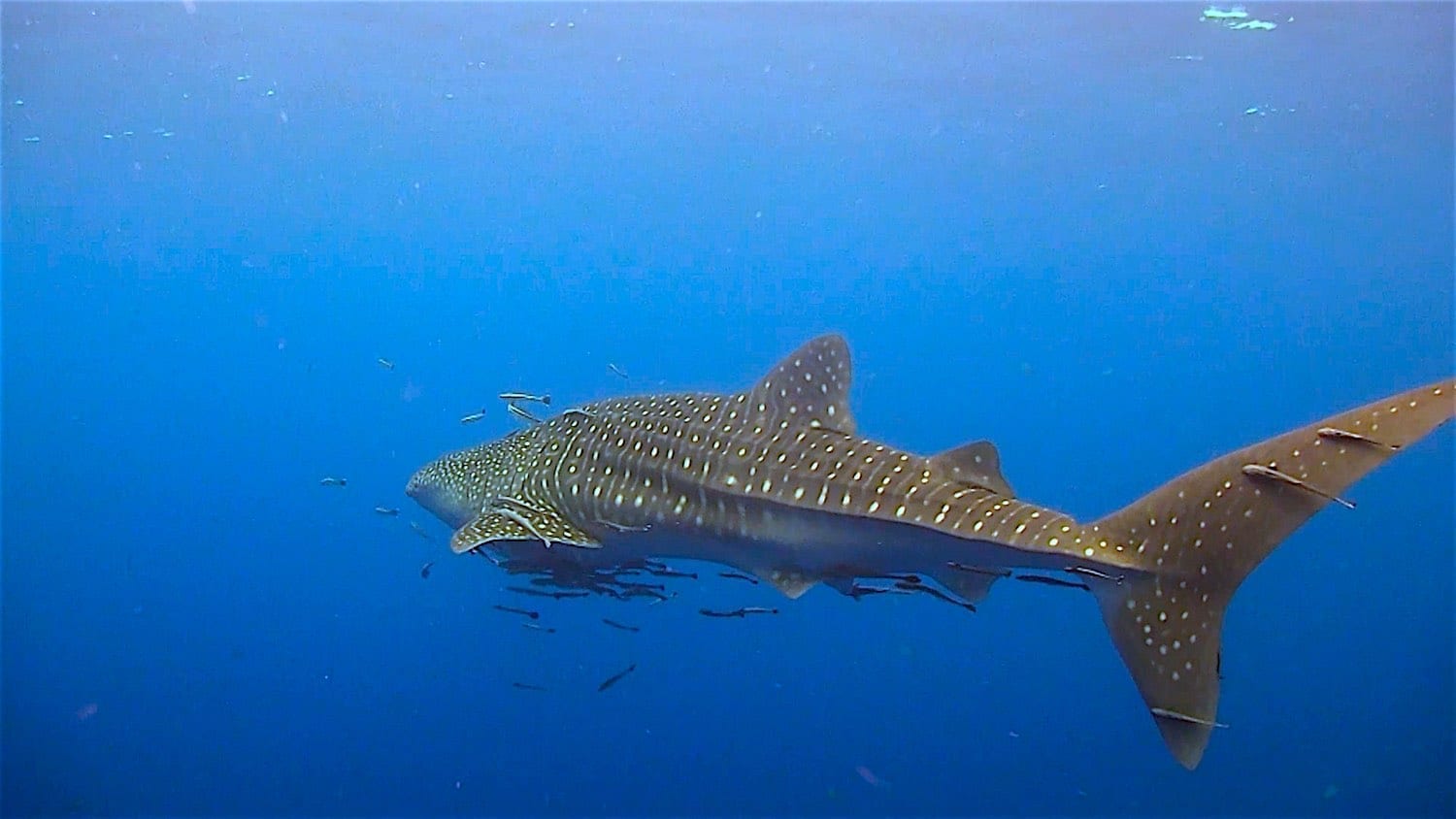
Best Dives sites to see a Whaleshark on Koh Tao
Additional dive sites that Whalesharks are seen at are Shark Island in the south, Hin Wong Pinnacle in the east, and Green Rock off the north west coast of Koh Nangyuan island.
If you are only just learning to dive, there have been many sightings at White Rock and Twins, which are dive sites used for the Open Water course, so you could be lucky and see one at these locations.
If you prefer snorkeling to scuba diving, it is still possible to see Whalesharks when the visibility is good, due to their preference for swimming close to the surface.
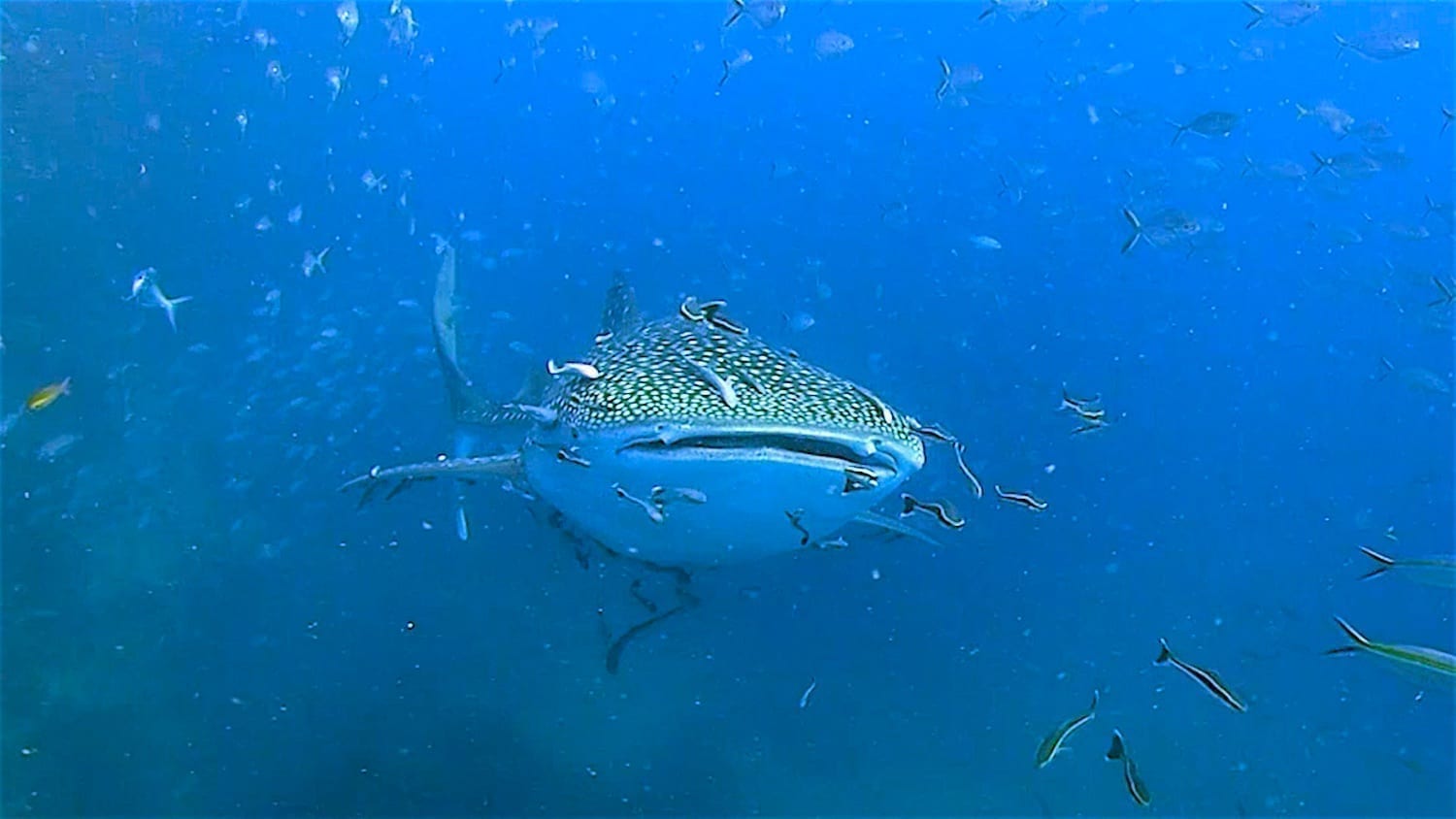
Shark Island
Shark Island is a good choice as it is accessible by kayak, but it is also possible to join a dive boat heading to one of the other locations.
Around Koh Tao, it is not uncommon for Whalesharks to be visible from the boat as they cruise along just under the surface.
If you plan to visit Koh Tao to learn to scuba dive or are planning a short trip to enjoy the viewpoints and snorkeling, there is always a chance the largest fish in the sea will grace you with their presence.
You can contact us for information regarding scuba diving, snorkeling or where to stay or what to do before you arrive.










